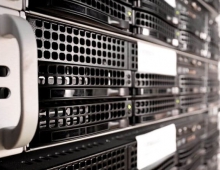
IBM Rolls Out New Mainframe
IBM rolls out a new mainframe computer Tuesday boasting a 50 percent performance boost and lower energy costs than its predecessor.
The new System z10, with a starting price at about $1 million, comes as IBM focuses on lowering the price tag for running its storied line of data-crunching workhorses.
The Armonk, N.Y.-based company said it designed the new machine to help companies and government agencies that rely on mainframes - usually for critical data processing such as bank transactions or census statistics crunching - save money on energy bills and better handle a flood of Internet information.
For years some IT experts predicted the demise of the mainframe, bulky and expensive machines that face competition from smaller, less-expensive servers. The new mainframe faces competition from less expensive server computers from HP, Dell Inc and Sun Micro, among others, whose top-line server computers cost more than $250,000 and perform many of the same functions as IBM's mainframes.
But IBM says mainframe revenue is growing, rising in 5 out of the last 7 quarters, thanks in part to interest from emerging markets like Brazil, China, India and Russia.
IBM says it incorporated a number of technological upgrades into the new machine to appeal to cost-conscious companies looking to consolidate the number of servers in their data centers.
The z10's capacity is equivalent to 1,500 servers based on the popular x86 design, IBM says, though it has 85 percent lower energy costs and takes up 85 percent less space than the batch of x86 servers.
The new machines also boast more processing horsepower, using 64 processors compared to the 54 processors used in its predecessor, the z9.
Those chips are better at multitasking - the new machine is IBM's first mainframe to use so-called quad-core chips.
IBM said the new machine has the reliability that mainframe customers expect but improves performance in tackling Web-based applications.
While the high-end z10 starts at about $1 million, IBM notes it has mid-range mainframes that start around $100,000.
The Armonk, N.Y.-based company said it designed the new machine to help companies and government agencies that rely on mainframes - usually for critical data processing such as bank transactions or census statistics crunching - save money on energy bills and better handle a flood of Internet information.
For years some IT experts predicted the demise of the mainframe, bulky and expensive machines that face competition from smaller, less-expensive servers. The new mainframe faces competition from less expensive server computers from HP, Dell Inc and Sun Micro, among others, whose top-line server computers cost more than $250,000 and perform many of the same functions as IBM's mainframes.
But IBM says mainframe revenue is growing, rising in 5 out of the last 7 quarters, thanks in part to interest from emerging markets like Brazil, China, India and Russia.
IBM says it incorporated a number of technological upgrades into the new machine to appeal to cost-conscious companies looking to consolidate the number of servers in their data centers.
The z10's capacity is equivalent to 1,500 servers based on the popular x86 design, IBM says, though it has 85 percent lower energy costs and takes up 85 percent less space than the batch of x86 servers.
The new machines also boast more processing horsepower, using 64 processors compared to the 54 processors used in its predecessor, the z9.
Those chips are better at multitasking - the new machine is IBM's first mainframe to use so-called quad-core chips.
IBM said the new machine has the reliability that mainframe customers expect but improves performance in tackling Web-based applications.
While the high-end z10 starts at about $1 million, IBM notes it has mid-range mainframes that start around $100,000.





















